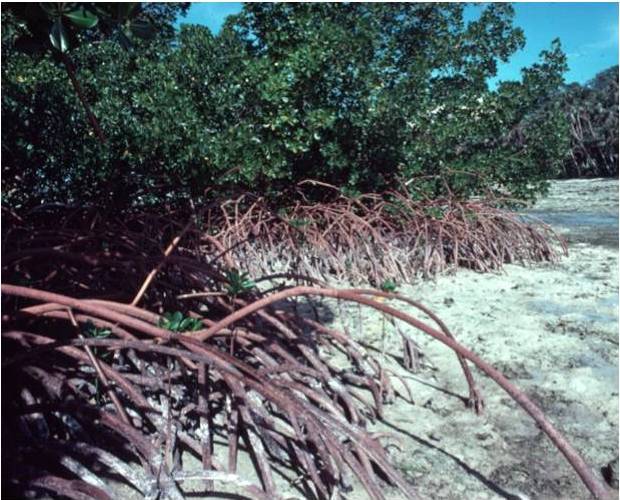Spotted Mangrove, Rhizophora stylosa
Local Name: Tiri Tabua
Description:
• This is a medium sized tree ranging from 8-30m in height.
• Leaves are about 10cm long and slightly rounded with a small spike at the tip and have a lighter green undersurface covered with brown specs.
• Flowers are white and are wind or insect pollinated.
• Seeds are long with a bulging cap.
Flowering and Fruiting: Flowering takes place from February to April whereas fruiting takes place throughout the year.
Uses: Used in building, dye production, firewood.
Habitat: While it is most commonly found on beach fronts or lower tidal reaches it may also extend upstream along estuaries and rivers that remain brackish through most of the year.
Distribution: Very widespread distribution ranging from India to the Pacific. Common throughout the Fiji group.

